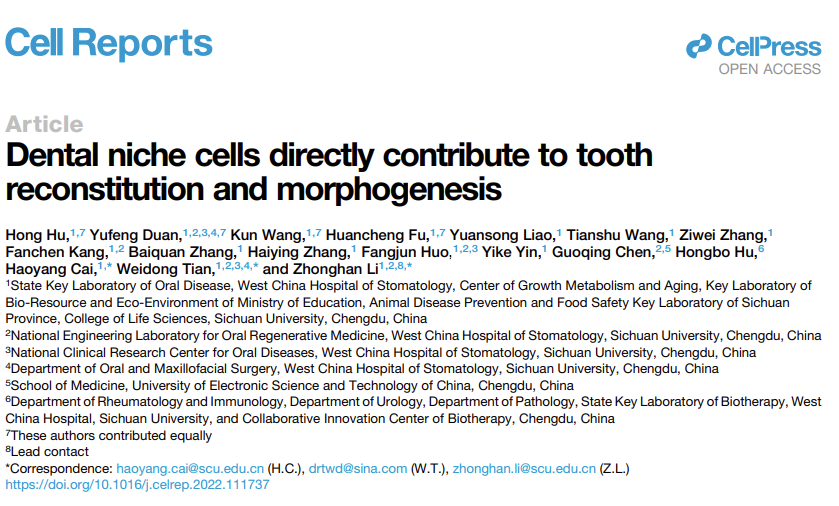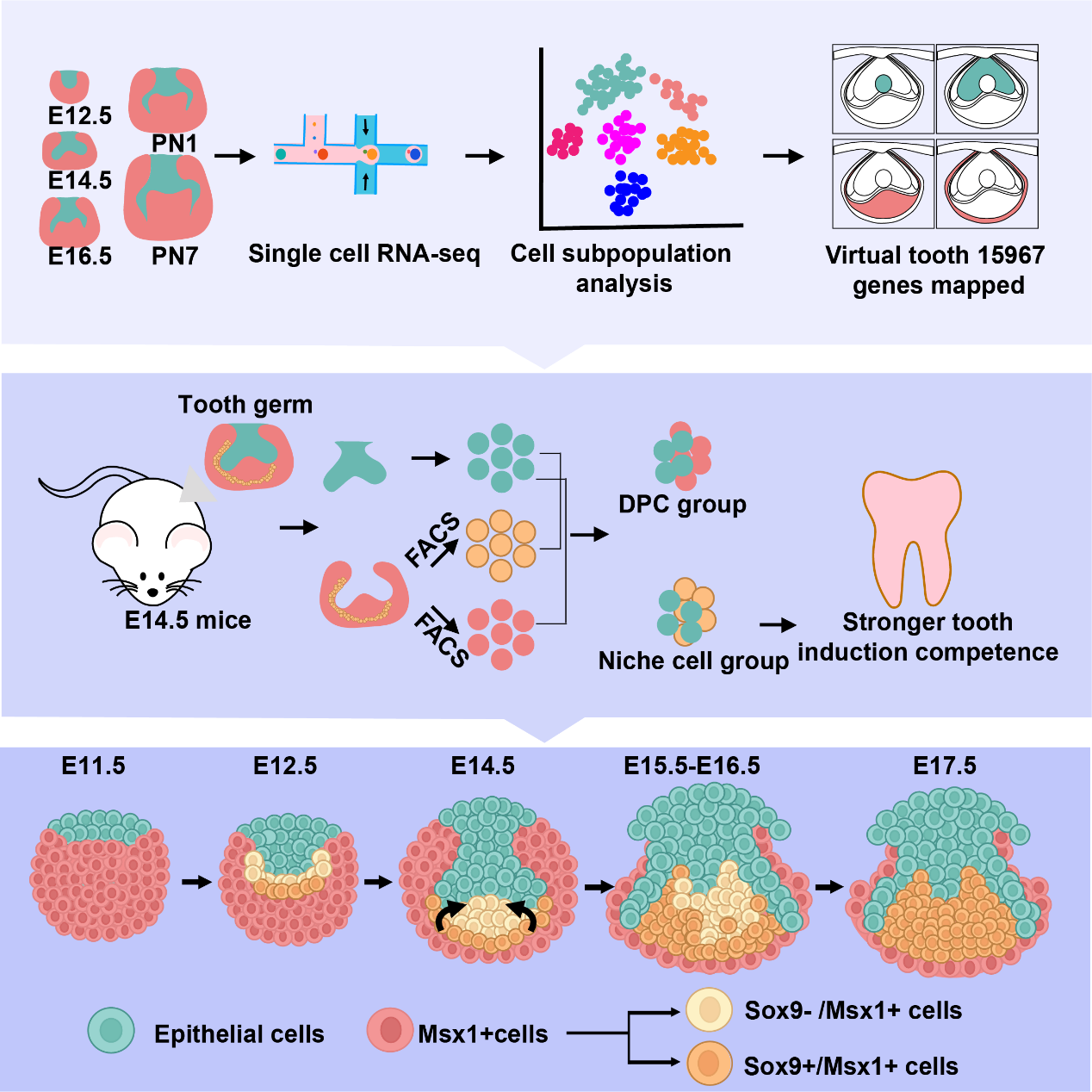
The research team of Professor Zhonghan Li, Professor Weidong Tian and Professor Haoyang Cai of Sichuan University published in Cell Reports a research paper entitled "Dental Niche Cells Directly Contribute to Tooth Reconstitution and Morphogenesis" on December 6, 2022. In this study, single cell sequencing and bioinformatics technology were used to characterize the dynamic changes of epithelial cells and mesenchymal cells during the development of molars from embryo to postnatal stage (E12.5 to PN7), and the location of genes expressed in E14.5 molars was characterized with high accuracy by DistMap method. Sdc1 was identified as a specific marker of dental papilla, while niche cells expressed other characteristic genes.

“--- Here, we generate a dual-fluorescence model to track and analyze dental cells from embryonic to postnatal stages, in which Pitx2+ epithelium and Msx1+ mesenchyme are sufficient for tooth reconstitution. Single-cell RNA sequencing and spatial mapping further revealed critical cellular dynamics during molar development, where tooth germs are organized by Msx1+Sdc1+dental papilla and surrounding dental niche. Surprisingly, niche cells are more efficient in tooth reconstitution and can directly regenerate papilla cells through interaction with dental epithelium. Finally, from the dental niche, we identify a group of previously unappreciated migratory Msx1+ Sox9+ cells as the potential cell origin for dental papilla. Our results indicate that the dental niche cells directly contribute to tooth organogenesis and provide critical insights into the essential cell composition for tooth engineering.” (Summary)
“---Dental papilla cells were often assumed to play a critical role in this process and thus became the focus of previous research. It is worth noting that previous studies using lipophilic membrane stain had hinted that the development of dental papilla might require an additional influx of cells from the dental niche,
80 but those observations have not been further explored yet. In this study, through spatial mapping and functional validation, dental niche cells were found to play an important role in driving the epithelial-mesenchymal interacting process. These cells could induce tooth formation in clusters, promote reorganization and survival of the dental epithelium, and regenerate Msx1+Sdc1+ dental papilla cells. Lastly, lineage tracing in vivo confirmed that Msx1+ Sox9+ dental niche cells directly contributed to the dental papilla. These niche cells migrated into the dental papilla and become the main cell composition. Together, our data have identified a previously unappreciated role of dental niche cells in tooth formation and have provided novel insights on the critical cell composition that participates in tooth development, which may shed light on designing next-generation tooth bioengineering strategies to achieve the eventual goal of de novo tooth regeneration.”(Discussion)
Hong Hu, Yufeng Duan, Kun Wang and Huancheng Fu, doctoral students of Sichuan University, are the co first authors of this paper, and Zhonghan Li, Weidong Tian and Haoyang Cai are the co corresponding authors of this paper.This work was funded by the National Key Research and Development Program of China ( 2021YFA1100601 , 2017YFA0104801 ), National Natural Science Foundation of China ( 32071455 ), Sichuan Science & Technology Program ( 2021ZDZX0010 ), SCU grant ( 020SCUNL109 ), and the Fundamental Research Funds for the Central Universities ( SCU2019D013 ).
http://doi.org/10.1016/j.celrep.2022.111737
